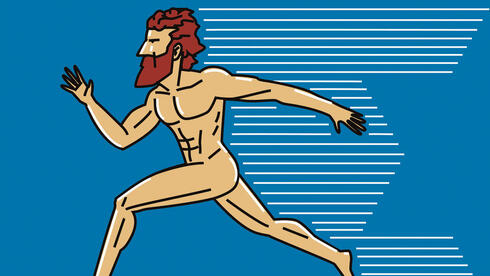In a vivid scene from the Second Book of Maccabees, priests abandon their duties at the Temple to rush to the gymnasion, joining wrestling matches and discus throwing in full nudity.
This account, set before the Hasmonean Revolt, captures the tension between devout Jews and Hellenized Jews during the Second Temple period. Why did many Jews fiercely oppose an institution centered on sport? The reasons are complex.
4 View gallery
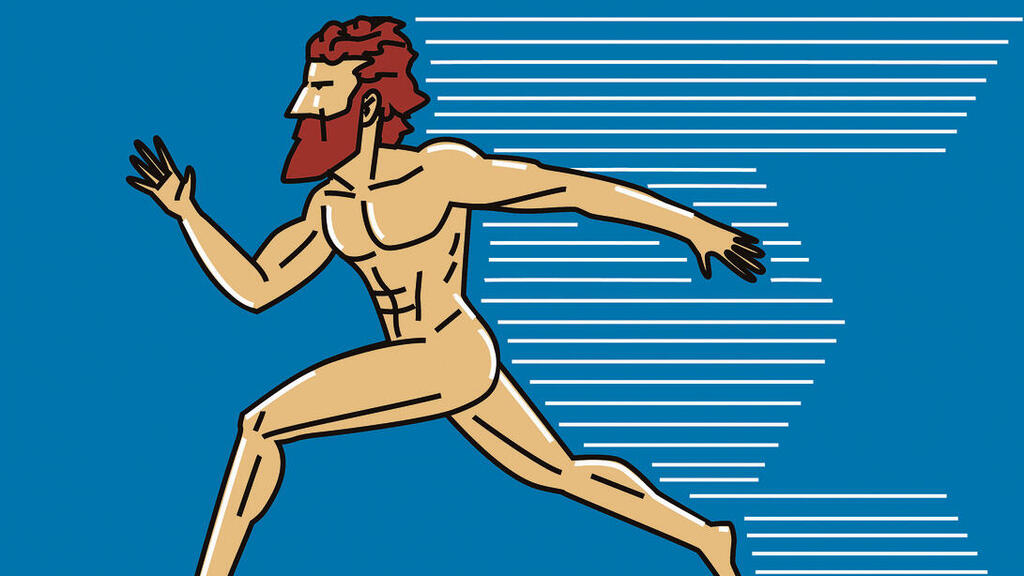

(Illustaration: Leo Altman)
“The gymnasion symbolized Jerusalem’s transformation into a Hellenistic city, with even priests engaging in a foreign culture,” said Dr. Haim Kaufman, an expert in Hebrew sports history who taught for years at the Levinsky-Wingate Academic Center. After Alexander the Great’s conquests, a wave of Hellenization swept through occupied territories, blending local and Greek cultures.
In the second century BCE, under the Seleucid Empire, founded by King Seleucus I, a Hellenized high priest named Jason (originally Yehoshua or Yeshua) spearheaded reforms, culminating in the establishment of a gymnasion in Jerusalem, infuriating traditional Jews.
In Greek culture, sports and physicality held a place of honor, with the Olympic Games originating there. The term “gymnasion” derives from the Greek word “gymnos,” meaning naked, as men trained and competed in events like running, long jumping, wrestling, javelin throwing and discus—all in the nude.
Kaufman explained that the gymnasion was a central institution in the Greek polis, or city-state, where training was a prerequisite for citizenship. The gymnasion’s presence in Jerusalem raised broader questions about why Jews have historically excelled less in sports compared to other fields and why some Orthodox rabbis remain wary of professional athletics.
During the Second Temple period, full Jewish sovereignty was absent despite the Temple’s existence. The First Book of Maccabees attributes the gymnasion’s construction to “people from the nation” who built it “according to the customs of the Gentiles.”
4 View gallery
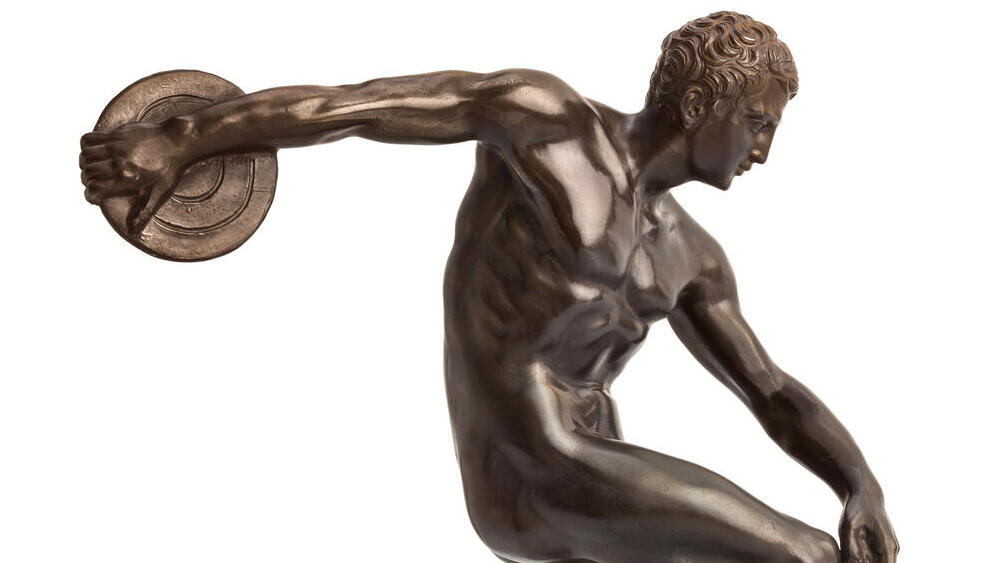

Ancient Greek statue of discus thrower
(Photo: Antonio Gravante / Shutterstock)
The Second and Fourth Books of Maccabees credit Jason, who advanced Hellenistic reforms without engaging in idolatry. The Second Book of Maccabees describes the gymnasion negatively, noting that priests neglected altar duties, disregarded the sacred and rushed to unlawful exercises like wrestling and discus, valuing Greek ways over ancestral traditions.
Ancient Jewish historian Josephus Flavius attributes the gymnasion to Menelaus, Jason’s successor as high priest and the influential Tobiad family. “Menelaus embraced idolatry and full Hellenization, fueling outrage among the Jewish masses,” Kaufman said. “His reforms, building on Jason’s, led to Antiochus’s religious decrees, sparking the Hasmonean Revolt and Hanukkah.”
The First Book of Maccabees notes that some Jews at the gymnasion “stretched their foreskins” to conceal circumcision, embarrassed by it in a culture where damaging the body was sacrilege. “Circumcision looked odd in a setting of nudity,” Kaufman explained.
Dr. Hanan Birenboim, a history lecturer at Herzog Academic College, added that the gymnasion was seen as the pinnacle of Hellenization. “It was a temple to the human, worshipping man, while the Temple worshipped God,” he said.
4 View gallery
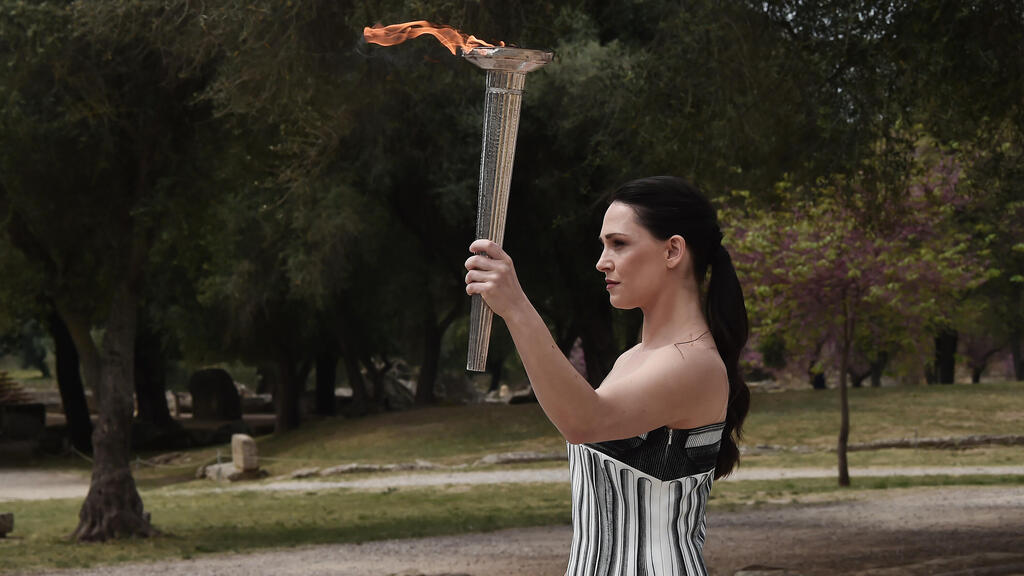

Passing of the Olympic flame at the Olypmic Games
(Photo: Milos Bicanski / Getty Images)
“This clash between Greek humanism and Jewish theocentrism was more threatening than mere idolatry.” Most Jews then lived outside Judea, which operated as an autonomous region under the high priest.
“Jason represented a progressive Judaism, open to foreign influences without adopting idolatry,” Kaufman noted. “It was about turning Jerusalem into a polis, not worshipping pagan gods.”
Jewish sages historically expressed reservations about Greek and Roman physical culture but not necessarily sports itself. “In the sages’ time, sports were inseparable from their cultural baggage,” Birenboim said.
“They rejected this culture, perhaps discarding the baby with the bathwater. Unlike today’s neutral gyms, sports then were tied to a broader cultural framework.” Roman sports, like gladiator fights and chariot races, were violent, clashing with Jewish values, yet bathhouses, a Roman institution, were embraced. “Jewish sages said a scholar shouldn’t live in a city without a bathhouse,” Birenboim noted.
Kaufman pointed out that later Jewish sources show familiarity with Greek physical culture, debating, for instance, whether applying oil before wrestling was permissible on Shabbat. The Rambam championed exercise and physical well-being as part of human perfection.
4 View gallery
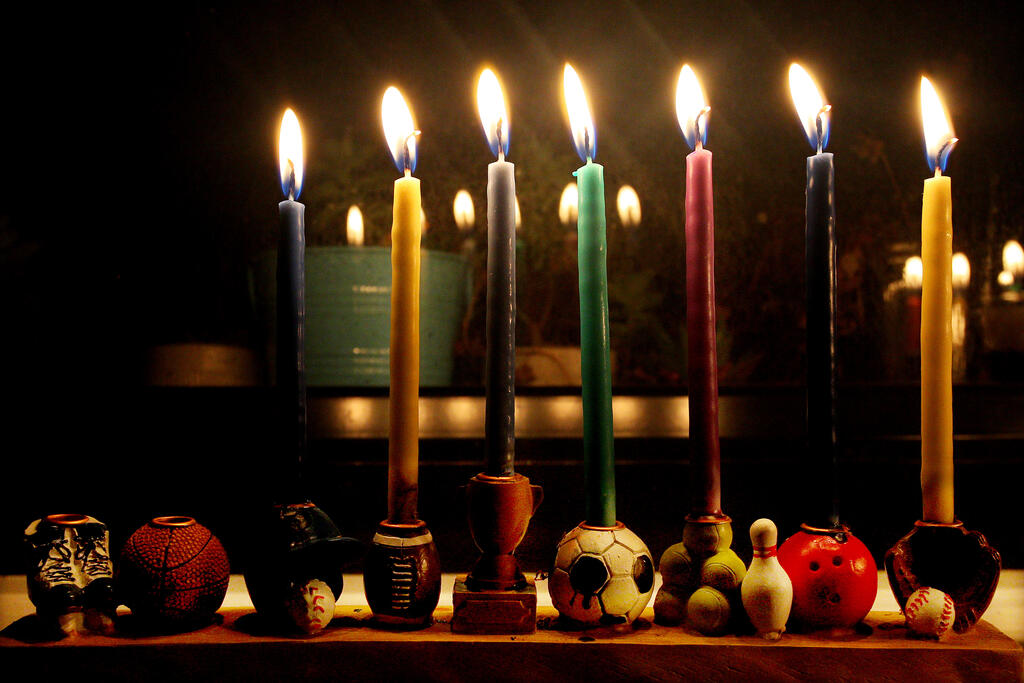

Hanukkah candle lighting
(Photo: Lisa Maree Williams / Getty Images)
However, conservative Jewish circles retain a lingering unease with sports, tied to its historical association with Hellenization. “This trauma spans 2,000 years,” Kaufman said.
“Sports can evoke fears of returning to that Hellenistic Jerusalem with its gymnasion. Judaism and nudity never meshed, and an institution centered on nudity wasn’t a Jewish value. Yet, opposition to sports isn’t inherent to Judaism.”
By the Hasmonean period, the gymnasion vanished from Judea. Though the Hasmoneans fought Greeks and Hellenized Jews, they adopted Greek names but never rebuilt a gymnasion.
Under King Herod in the first century BCE, a hippodrome for chariot races was constructed, its remnants visible today in Caesarea. The gymnasion episode in Jerusalem, though distant, marked a pivotal moment shaping Jewish attitudes toward sports for generations.
